
The Minor Council (Italian : Minor Consiglio) or Ducal Council was one of the main constitutional bodies of the Republic of Venice, and served both as advisors and partners to the Doge of Venice, sharing and limiting his authority.

The Minor Council (Italian : Minor Consiglio) or Ducal Council was one of the main constitutional bodies of the Republic of Venice, and served both as advisors and partners to the Doge of Venice, sharing and limiting his authority.
The Minor Council was established likely sometime between 1172 and 1178, [1] shortly after the Great Council. [2] Both councils had their antecedents in a 'council of wise men' (consilium sapientes) that the Venetian patriciate had placed next to the Doge to advise him and curtail his independent authority, and is attested at least since 1143. [3] [4] Indeed, the first known ducal councillors (consiglieri ducali) were elected along with Doge Pietro Barbolano in 1032, to prevent a recurrence of the monarchical tendencies of his predecessors. [5]
The members of the Minor Council were elected by the Great Council, and the chosen members were prohibited from refusing the election on heavy penalties. [1] The number of ducal councillors was raised to six, one for each district of the city. [1] [6] Their terms of office lasted for one year, followed by another year (later raised to 16 months) where they were prohibited from occupying the same office. [1] The ducal councillors were ex officio members of the Great Council. [6]
Very soon after its establishment, the heads of the Council of Forty (Capi dei Quaranta) became associated with the Minor Council, sometimes substituting for missing ducal councillors and holding the right to vote with them in certain matters. [1] [6] This association is documented as established fact by 1231. [1]
In 1437, three of the year's outgoing councillors were named as 'inferior' councillors, not formally part of the Minor Council, but tasked with representing it in the Criminal Forty. [1]
The main function of the Minor Council was to share in and limit the Doge's power. [1] Indeed, so close was the association of the two, that they are frequently almost conflated in the sources. [1] The Doge was dependent on the assent of at least four ducal councillors for his decisions to have force, and could not open dispatches except in their presence, while conversely the Minor Council did not require the Doge's presence to act. [7]
In the absence of a Doge, or during an interregnum, the Minor Council handled all government, and one of the ducal councillors—not always the eldest—became the Vice Doge. [1] [8] The Minor Council also initiated the election of a new Doge, and was empowered to introduce any changes to the process that they sought fit. [8] The Vice Doge was then responsible for crowning the newly elected Doge with the chief symbol of his office, the corno ducale . [8]
Together with the Capi dei Quaranta and the Doge, the Minor Council formed the Signoria of Venice, the formal Venetian government, [6] and along with the boards of the savi formed the de facto cabinet, the Full College. [9] [10]
The Minor Council co-presided with the Doge over all governing councils of the Republic, and had the right to initiate laws and proposals to be put before the Great Council. [1] The Minor Council was also notified in advance of any draft proposal initiated by other councils, and had the right to delay its presentation to the Great Council for three days. [1] Furthermore, even individual ducal councillors had the right to convene the Great Council. [1] Once the lower councils had reached a decision, however, the Minor Council was bound to obey it. [6] Indeed, the oath of office of the ducal councillors explicitly obliged them to enforce this on the Doge, and to oppose him should he try to override or ignore a decision of the lower councils. [8]
As part of the Signoria, the Minor Council shared in the supervision of the courts, [8] and adjudicated jurisdiction in disputes between junior magistracies. [1] The Doge's oath of office obliged him and his ducal councillors to visit the courts in person and hear any complaints brought to them there. [8] Until 1446, the Minor Council also had the responsibility of interpreting the law. [1]
In addition, the ducal councillors were responsible for supervising the administration of Venice itself, and the elections of its officials. [1] In financial matters, the Minor Council originally had the right to dispose of public funds of up to 10 pounds of gold, but this was abolished in 1441. [1]
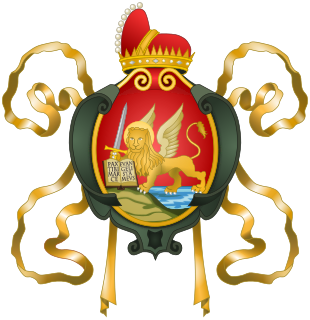
The Doge of Venice, sometimes translated as Duke, was the chief magistrate and leader of the Republic of Venice between 726 and 1797.

The Doge's Palace is a palace built in Venetian Gothic style, and one of the main landmarks of the city of Venice in northern Italy. The palace was the residence of the Doge of Venice, the supreme authority of the former Republic. It was built in 1340 and extended and modified in the following centuries. It became a museum in 1923 and is one of the 11 museums run by the Fondazione Musei Civici di Venezia.
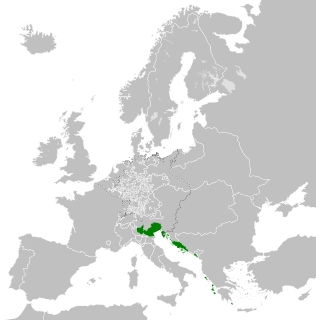
The Republic of Venice or Venetian Republic, traditionally known as La Serenissima, was a sovereign state and maritime republic in parts of present-day Italy which existed for 1100 years from 697 AD until 1797 AD. Centered on the lagoon communities of the prosperous city of Venice, it incorporated numerous overseas possessions in modern Croatia, Slovenia, Montenegro, Greece, Albania and Cyprus. The republic grew into a trading power during the Middle Ages and strengthened this position in the Renaissance. Citizens spoke the still-surviving Venetian language, although publishing in (Florentine) Italian became the norm during the Renaissance.

Leonardo Loredan was a Venetian nobleman and statesman who reigned as the 75th Doge of Venice from 1501 until his death in 1521. A wartime ruler, his dogeship was one of the most important in the history of Venice. In the dramatic events of the early 16th century, Loredan's Machiavellian plots and cunning political manoeuvres against the League of Cambrai, the Ottomans, the Mamluks, the Pope, the Republic of Genoa, the Holy Roman Empire, the French, the Egyptians and the Portuguese saved Venice from downfall.
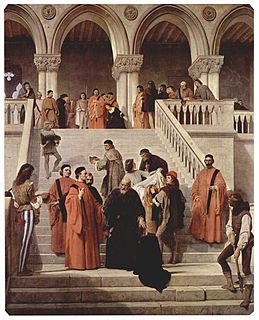
The Council of Ten, or simply the Ten, was from 1310 to 1797 one of the major governing bodies of the Republic of Venice. Elections took place annually and the Council of Ten had the power to impose punishments upon nobles. The Council of Ten had a broad jurisdictional mandate over matters of state security. The Council of Ten and the Full College constituted the inner circle of oligarchical patricians who effectively ruled the Republic of Venice.
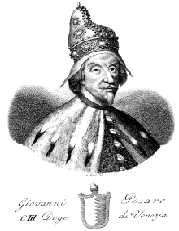
Giovanni Pesaro was the 103rd Doge of Venice, reigning from his election on April 8, 1658 until his death. The Cretan War (1645–1669) was ongoing for the entirety of his brief reign.

The office of Procurator of Saint Mark was one of the few lifetime appointments in the government of the Venetian Republic and was considered second only to that of the doge in prestige. It was routinely occupied by nobles belonging to the most influential families and typically represented the climax of a distinguished political career, although it was often an intermediate position prior to election as doge.

The Senate, formally the Consiglio dei Pregadi or Rogati, was the main deliberative and legislative body of the Republic of Venice.

The Great Council of Venice or Major Council, originally the Consilium Sapientium, was a political organ of the Republic of Venice between 1172 and 1797 and met in a special large hall of the Palazzo Ducale. Participation in the Great Council was established on hereditary right, exclusive to the patrician families enrolled in the Golden Book of the Venetian nobility.
The Council of Forty, or the Supreme Court of Forty, also known as The Quarantia was one of the highest constitutional bodies of the Republic of Venice, with both legal and political functions as the Supreme Court.
The Avogadori de Comùn, literally "public prosecutors", were an institution of the Republic of Venice. The Avogadori were responsible for taking care of and defend the interests of the Commune Veneciarum, meaning the union of noble families in the Government of Venice, in a manner similar to that of a modern State Attorney.
The Concio, in the Republic of Venice, was the general assembly of freemen from which the Doge was elected. It was in use between the years 742 and 1423 before it lost its function when the Serrata del Maggior Consiglio passed power into the hands of the aristocratic class interior.
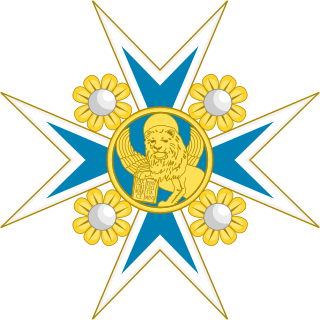
The Order of Saint Mark was the sole order of chivalry of the Republic of Venice. It was named in honour of Venice's patron saint, Mark the Evangelist.
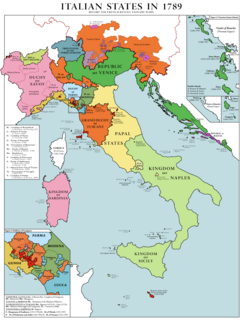
The Fall of the Republic of Venice was a series of events that culminated on 12 May 1797 that led to the dissolution and dismemberment of the Republic of Venice at the hands of Napoleon Bonaparte and Habsburg Austria.
The Savii or Savi del Consiglio, also known as the Savi[i] Grandi, were senior magistrates of the Republic of Venice.
The Savii or Savi di Terraferma was a board of five senior magistrates of the Republic of Venice, initially charged with the defence of the Republic's possessions in the Italian mainland. Gradually they assumed specific roles pertaining to the supervision of public finances, the military administration, state ceremonies, and urgent ad hoc matters.
The Captain of the Gulf was a senior naval command of the Republic of Venice.

The Full College was the main executive body of the Republic of Venice, overseeing day-to-day governance and preparing the agenda for the Venetian Senate.

The Provveditore Generale da Mar was a senior office in the Venetian navy and in the Venetian overseas empire.
The Venetian Inquisition, formally the Holy Office, was the tribunal established jointly by the Venetian government and the Roman Catholic Church to repress heresy throughout the Republic of Venice. The inquisition also intervened in cases of sacrilege, apostasy, prohibited books, superstition, and witchcraft. It was established in the 16th-century and was abolished in 1797.